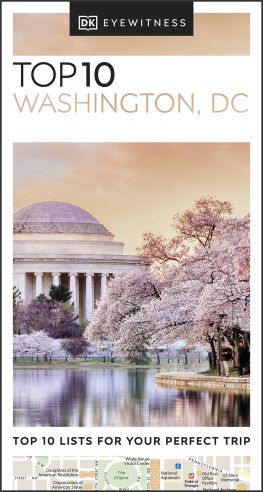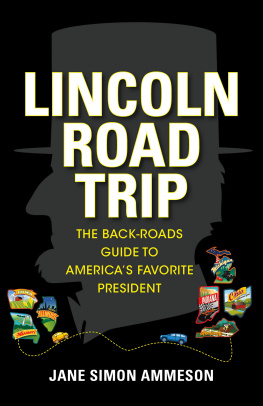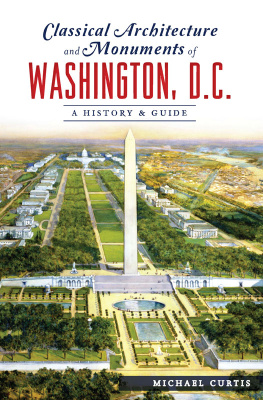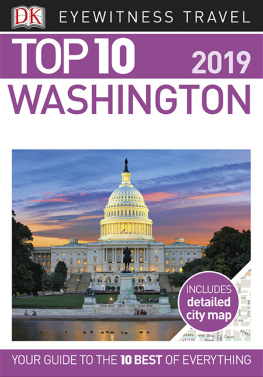

Published by The History Press
Charleston, SC 29403
www.historypress.net
Copyright 2014 by Alison Fortier
All rights reserved
Cover images: The United States Capitol and Reflecting Pool. Courtesy of Gregory OHanlon; the Marine Corps War Memorial. Courtesy of Gregory OHanlon.
First published 2014
e-book edition 2014
ISBN 978.1.62585.064.5
Library of Congress Cataloging-in-Publication Data
Fortier, Alison B.
A history lovers guide to Washington, D.C. : designed for democracy / Alison B. Fortier ; photographs by Gregory OHanlon ; drawings by Joseph Harrison Snyder.
pages cm
Includes bibliographical references and index.
print edition ISBN 978-1-62619-529-5
1. Washington (D.C.)--History. 2. Washington (D.C.)--Description and travel. 3. Washington (D.C.)--Buildings, structures, etc. I. Title.
F194.F73 2014
975.3--dc23
2014011085
Notice: The information in this book is true and complete to the best of our knowledge. It is offered without guarantee on the part of the author or The History Press. The author and The History Press disclaim all liability in connection with the use of this book.
All rights reserved. No part of this book may be reproduced or transmitted in any form whatsoever without prior written permission from the publisher except in the case of brief quotations embodied in critical articles and reviews.
In memory of Don, who came to Washington, D.C., as a young man from Ohio, determined to make this a better place.
CONTENTS
PREFACE
Washington, D.C., is unique. It is a city, yet it is also a federal district created by the United States Constitution to house our government institutions and reflect our democratic principles.
This book tells the story of Washington, D.C., from its origins to current times. It helps the reader experience how Washington operates today. Brief narratives alternate with visits to sites in the capital to make the story real.
Visits to the White House, the United States Capitol, the national military memorials and the museums are here. Feel the presence of George Washington and Thomas Jefferson, who played important roles in the creation of this city. Stand where Abraham Lincoln did as he watched the ongoing construction of the U.S. Capitol dome during the Civil War to demonstrate the strength of the Union. Understand why Frederick Douglass felt it important to move here and why Martin Luther King Jr. felt it critical to come here to further civil rights, equality and justice. Sit on the steps of the Lincoln Memorial, look across the Mall to the Capitol and reflect on the meaning of freedom and democracy.
When visiting Washington, D.C., it is important to check the websites provided or call ahead to make sure a particular site is open. Actual hours of operation may vary from day to day and season to season. Recently, renovations have closed all or part of some sites. In some cases, advance arrangements for tours or visits are preferred or even required. Advance ticketing is always necessary for White House tours, as well as at the State Department, the Treasury Department and the Department of the Interior. In warmer months, reservations in advance for visits to the United States Capitol, the Bureau of Printing and Engraving, the Holocaust Museum, the Voice of America and other popular tours are strongly advised. How to arrange for tickets is explained in this book.
It is not necessary to visit the sites in the order presented in this book. However, when you visit one site, you will bring to it an understanding of Washington, D.C., overall.
This book would not be a reality without the advice, support and involvement of many people. Thank you to my commissioning editor at the The History Press, Banks Smither, for guiding this book and this author from draft to publication. Ryan Finn, my manuscript editor at The History Press, was also extremely helpful. Scott Gudes, Jeff Kelman and Ann Sauer kindly read drafts of the book and offered comments, corrections and recommendations that I greatly appreciated. Photographer Gregory OHanlon and artist Joseph Harrison Snyder worked with me to illustrate the sites of this beautiful city for which we share a common love. Laura Barry, research services librarian at the Kiplinger Library of the Historical Society of Washington, D.C., helpfully furthered my study of the citys history.
I would also like to extend a heartfelt thank-you to the National Park Service (NPS) and its dedicated employees who withstand all ranges of weather, good and bad, to bring to life the stories of our national monuments. You will note throughout the book references to a National Historic Landmark or the National Register of Historic Places. The National Park Service in the Department of the Interior has the responsibility of maintaining the register and preserving and protecting our national parks, sites and monuments. Without its work, we would not have many of these historic places to visit. There are too many park rangers to name who patiently answered my many questions during all the free tours they offer. However, I would like to express my appreciation to Melissa Cronyn and Tom Patterson, both of whom helped with the beautiful National Park Service map. Melissa summed up my experience with the NPS when she said, We are here to serve the public.
And I would like to thank my children, Graham and Merrill, who long ago taught me that visits to historical sites can and should be enjoyable as well as informative in a way that I hope is instructive to this book.

The Potomac River looking toward Georgetown. Courtesy of Gregory OHanlon.
CHAPTER 1
THE ORIGINS OF WASHINGTON, D.C.
WHY IS OUR NATIONAL CAPITOL LOCATED WHERE IT IS?
HOW DID IT GET ITS NAME?
Washington, D.C., is a government town. It is a city, and it is also a federal district created specifically to serve as the capital of the United States. Since Washington first opened its doors in 1800, its main industry has always been the public business.
Washington, D.C., is unique among American cities. It is the only one whose origins are in the United States Constitution. Article I of the Constitution establishes the power of the legislative branch to raise taxes, borrow money and regulate commerce. Article I also describes the power of Congress over a district that would serve as the seat of the United States government.
The idea of a federal district for our capital comes from a moment in our nations early history that left a lasting impression. In 1783, the Continental Congress was meeting in Philadelphia when an angry mob gathered in the streets. Many in the crowd were Revolutionary War soldiers frustrated that they had not received their military pay. Congress had no authority to call in troops for protection. It had to rely on the City of Philadelphia and the State of Pennsylvania to provide assistance. In 1783, neither came to its aid. Congress fled town.
Congress wanted to avoid similar situations in the future. Its solution was to create a federal district over which it would have exclusive authority. There was, however, no obvious location for this federal district. Many existing cities were contenders. Some preferred to keep the capital in New York City, the temporary United States capital from 1789 to 1790. New York was lively, with good restaurants, accommodations and diverse temptations.
Next page










